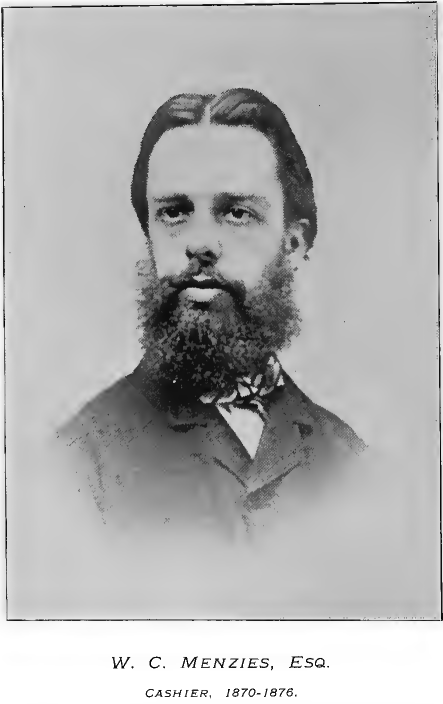|
THE following minute is
entered in the Directors’ Book under date of 28th July, 1870: “At a
meeting of the whole Board this morning the President informed them that
it had been discovered that the Cashier, Mr. James Forman, had been
guilty of making many fraudulent entries in the books of the Bank, by
which he had abstracted a large amount of its funds.” This state of
affairs had been reported to the President by the Accountant, Mr. J. C.
Mackintosh, who had been endeavoring for two or three years to check Mr.
Forman’s balances—a very difficult matter, as all the important books
were written exclusively by the latter; in fact were taken home by him
at the close of business each day.
The keys of the vault were at once given to Mr. Mackintosh, who was
thereupon appointed Deputy Cashier. The cash was found to agree with the
stated balance, but the checking and adjusting of the Ledger accounts,
which occupied many months, ultimately fixed the deficiency at the
figures hereinafter given. Through the lax methods of the President, who
held joint custody of the cash with Mr. Forman, it was an easy matter
for the latter to help himself: indeed, it is stated that Mr. Forman was
frequently allowed the use of the President’s keys. It is worthy of
remark that time and careful investigation have proved that the note
circulation accounts were not tampered with.
A meeting of the Shareholders was called for August 9th, and a joint
committee of Directors and Shareholders then formed to examine into the
Bank’s affairs. After trying with small success to straighten the
tangled accounts, this committee recommended that a banker of long
experience and known ability, having no previous connection with the
Bank, should be engaged, so that an independent report might be
presented to the Shareholders, and necessary changes made in the Bank’s
methods. Acting on this suggestion, the Directors appointed Mr. W. C.
Menzies, of the Bank of British North America, Cashier, on October 31st,
1870.
According to the report of the Cashier, Mr. Menzies, at the meeting in
1871, the deficiency was $314,967.68. The property transferred to the
Bank by Mr. Forman was estimated to be worth $179,296.45—though
realization has proved this estimate excessive — and the amount due from
his bondsmen was $28,000. The net loss was found to wipe out the Reserve
Fund of $80,000, the earnings of the Bank for the first half of the year
1870, and to impair the capital stock by the sum of $27,671.73. Under
the authority of the Dominion Act of 1871, $56,000 (or ten per cent.)
was written off Capital Account at a special meeting of Shareholders
held October 11th, 1871, and set aside as a contingent fund to provide
for this and other losses. The capital stock was thus reduced to
$490,000, and each individual share to $175.


Mr. Forman’s health
broke down under the strain of these exposures. There was so much
sympathy expressed for him that he was never prosecuted; he removed to
London and died a short time afterward. |
